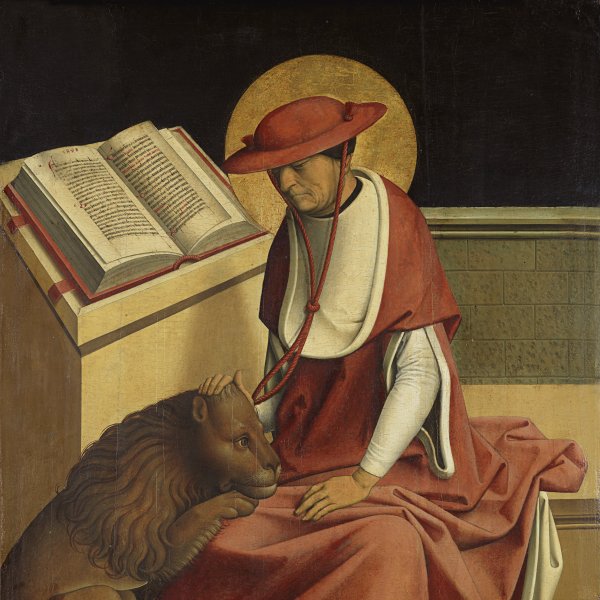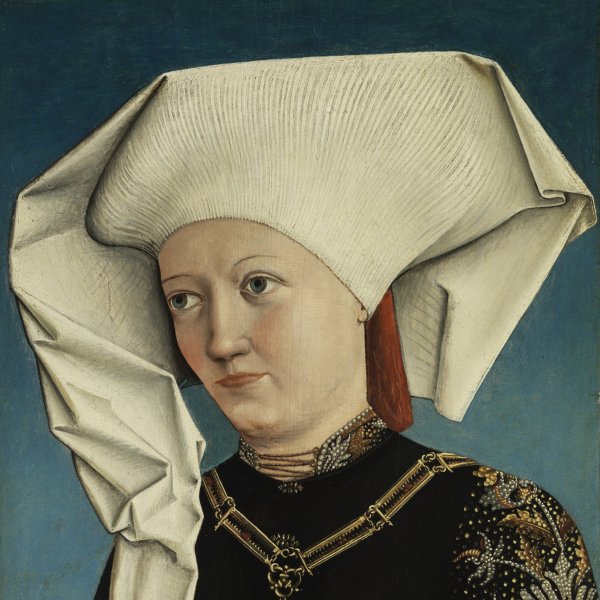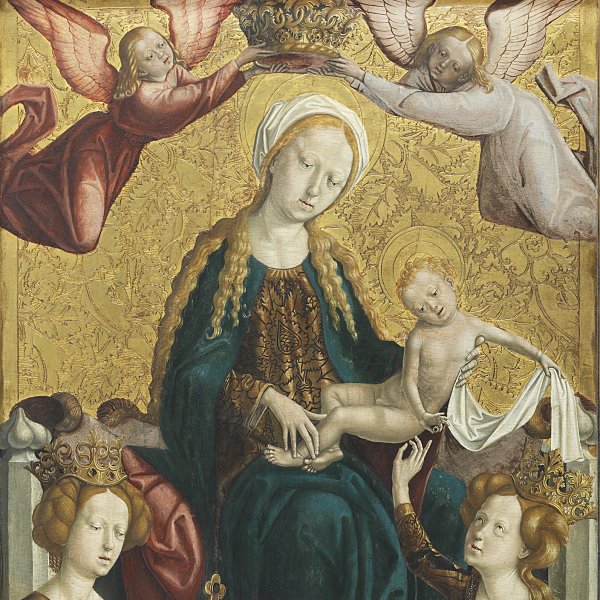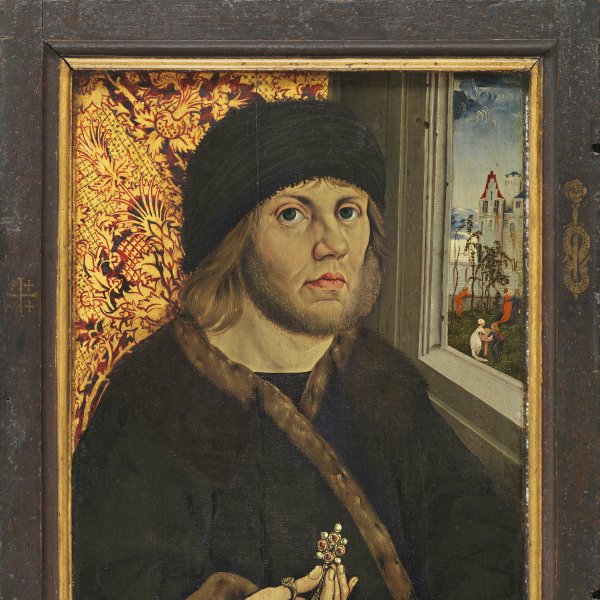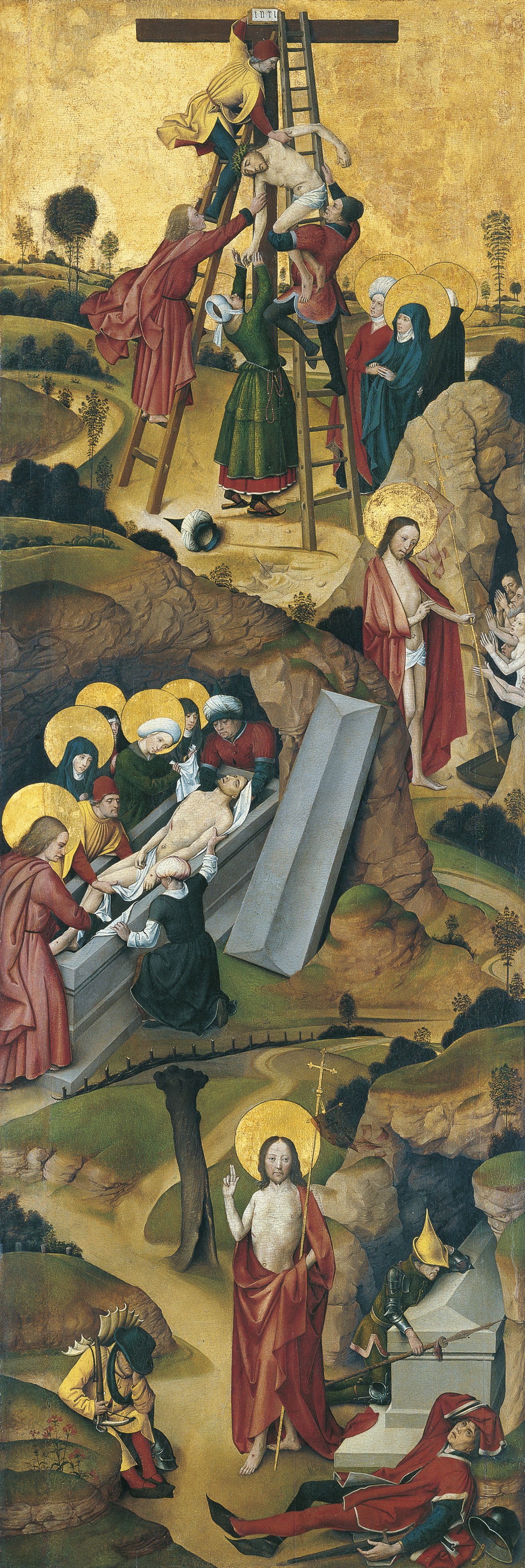Four Scenes from the Passion
Cataloguing these works has not been a simple task as they combine characteristics of the school of Cologne and of the region of Westphalia. Isolde Lübbeke located them around the area of Düren, whose local style combined the two trends. The anonymous artist used a narrow panel to depict four scenes: The Descent from the Cross, The Burial of Christ, Christ’s Descent into Limbo, and The Resurrection. The narrative starts at the upper part with the scenes connected by a long, winding path. The first episode is The Descent from the Cross, constructed using the traditional triangular composition formed by the cross with the ladders on either side. It is followed by The Burial of Christ, organised around a marked diagonal with the figures crowded together on the left side of the tomb. The next scene is Christ’s Descent into Limbo, with the souls of the Just depicted in prayer, emerging from a small crack in the rock. At the bottom and completing the narrative is The Resurrection.
NR
The use of gold and the way the scenes are organised has led to the suggestion that the panel was possibly the interior right wing of an altarpiece which, to judge from its relatively small size, was not painted for a high altar. The painting was previously in a Franciscan monastery in Düren. This presumably lateral panel, which may have flanked a Crucifixion or a sculptural ensemble in the centre, had an exterior face with an image of Saint Louis of Toulouse, now in the Leopold-Hörsch Museum in Düren.
The painting, which has proved difficult to catalogue due to its characteristics, has been associated with artists working in Westphalia and Cologne. Following a study of the various surviving elements of the overall composition, Lübbeke located it origins in the Düren area where artists fused the influences of the two schools that inspired this painter and where the traditional style was combined with new artistic trends.
Mar Borobia





